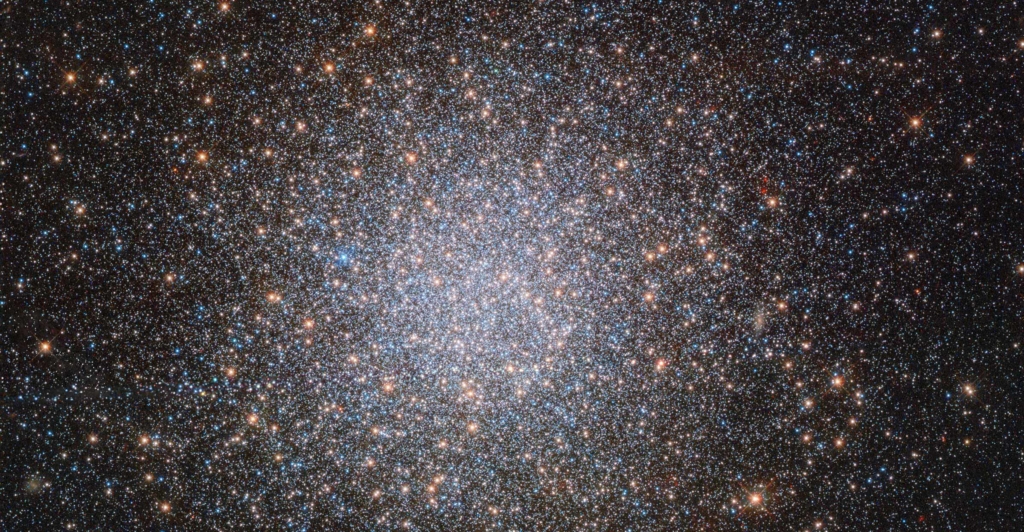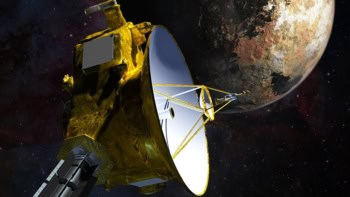Melissa Brobby reviews The Beginning and the End of Everything: From the Big Bang to the End of the Universe by Paul Parsons
When you think about the universe, the stuff within it and just the sheer vastness of its grandeur, it is easy to find yourself simultaneously fascinated and overwhelmed by it all. However, something I have found with popular-science books that take on this overarching subject is that they pack too much into a limited number of pages, potentially leaving a reader with a blown mind that absorbed nothing once they have turned the final page.
But as soon as I finished the first chapter of Paul Parsons’ The Beginning and the End of Everything: From the Big Bang to the End of the Universe I realized this would be a different type of read. This is not so much a book, but a guided tour from the beginning to the present and on to the sobering end of the universe as we currently understand it. Indeed, Parsons’ offering stands apart from other such books because it educates as well as entertains, with light touches of humour interwoven throughout.
Parsons begins with a detailed introduction to the universe, which in the 13.8 billion years since its birth has gone from something smaller than a subatomic particle, to the unimaginably vast entity it is today, all thanks to a mysteriously cataclysmic event known as the Big Bang. However, this isn’t just a tale about the universe – it is an enlightening account of humankind’s journey towards understanding and explaining the origins of our universe and our place within it. The book touches on Ptolemy’s geocentric model – where the Earth sat at the centre of the universe while all celestial objects, including the planets, Sun and stars, orbited around it – and the heliocentric model that we have used since the 16th and 17th centuries, in which it is the Sun, not the Earth, that sits at the centre.
As Parsons brings to light, we have come a long way in our understanding of the universe since then, thanks to many curious minds. They include Isaac Newton and his formulation of his three laws of motion, which quantified the gravity between two objects and paved the way for Albert Einstein’s ground-breaking theories that laid the groundwork for modern cosmology.
The chapters in this book take on heavy subjects including the Big Bang, the birth of galaxies, the existence of dark matter, quantum theory and even the “Big Crunch” theory – a hypothetical scenario where our universe stops expanding, and instead begins to contract until all the matter in it collapses to a singularity. These are weighty topics and Parsons has a lot of ground to cover in fewer than 300 pages – but I found that each chapter provided the perfect amount of introductory information to act as a guide to those areas, without overloading the reader. Indeed, there was enough intrigue to make you want to go and learn more for yourself.
One subject that Parsons tackles is one of the biggest unsolved mysteries in astronomy: dark matter, a form of matter thought to make up 95% of the universe. As we are still unsure what constitutes dark matter, Parsons turns his attention to how the concept was first conceived, introducing us to the astronomers from Jan Oort and Fritz Zwicky, who proposed the concept in the 1930s, to American astronomer Vera Rubin’s studies on rotation curves of disc galaxies, uncovering the discrepancy between predicted angular motions of galaxies and observed motions. Her work led to the realization that there is matter we cannot see, which nevertheless influences how galaxies move. This chapter is short and sweet and those readers after something more in-depth on dark matter might feel short-changed. However, Parsons offers plenty to whet your appetite on the subject.
What Parsons has done with The Beginning and The End of Everything is take the reader on an eye-opening tour of the entire cosmology of the universe, adding the physics to support it, but without the maths and complicated details
What Parsons has done with The Beginning and The End of Everything is take the reader on an eye-opening tour of the entire cosmology of the universe, adding the physics to support it, but without the maths and complicated details. He also includes the history of the development of theories that have led to our current understanding of how the universe came to be and how it is currently evolving.
Parsons’ narrative is vast and involving, but told in a warm and engaging way from the perspective of a person who has not only a great knowledge of the subject, but also an enthusiasm that shines through each page. Clearly and accessibly, he explains the complex science of how the universe came into being and how it is likely to end. This book is a wonderful addition to the popular-science genre, and has taken a subject that normally sits firmly in the university lecture theatre, and bought it to life in a way that will appeal to both an experienced cosmologist and anyone looking for an introduction to the subject.https://www.mombooks.com/book/the-beginning-and-the-end-of-everything/
-
2018 Michael O’Mara Books 288pp £16.99hb




